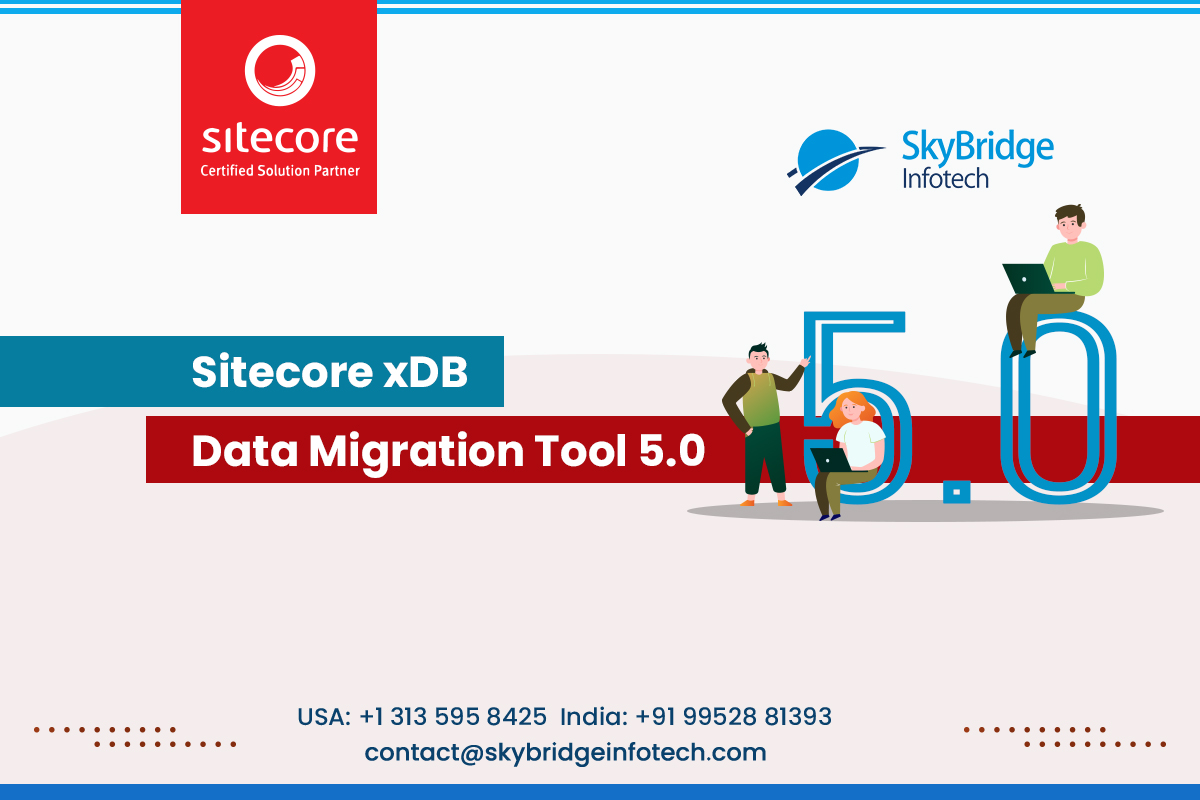Sitecore xDB Data Migration Tool 5.0 – Skybridge Infotech USA India
xDB Data Migration Tool 5.0: Sitecore xConnect introduces a new, omnichannel data model for Sitecore Experience Database. We must convert data collected in xDB into the new data model. We can use the Sitecore xDB Data Migration Tool 5.0 for the migration of xDB data from Sitecore 8.x to Sitecore 10.
Description:
The xDB Data Migration Tool is built on the Sitecore Data Exchange Framework (DEF):
• DEF provides the ability to read from a MongoDB database (the source system) and write to an xConnect server (the target system), as well as the ability to configure mapping data from a source system to a target system.
• The xDB Data Migration Tool provides the Preconfigured mapping of data from a MongoDB database to an xConnect server.
DEF is a Sitecore-based ETL tool.
ETL stands for:
• Extract – reading data from a source system.
• Transform – converting data from the source system into a format that is compatible with a target system.
• Load – writing the converted data to the target system.
Being Sitecore-based means that Sitecore items are used to configure ETL processes. For example, the mapping rules that determine how data is transformed are controlled by Sitecore items. If a new mapping is needed, a new Sitecore item is created. If an existing mapping needs to be changed, the Sitecore item that represents the mapping is edited.
How it works:
Sitecore recommends that, install the xDB Data Migration Tool on the content management (CM) server. Sitecore provides the verification database via a dacpac file. The dacpac file can be downloaded from the Sitecore Developer Portal, on the same page where the xDB Data Migration Tool is available.
Once the Tool installed and finished the verification we have to add the connection strings and set the interaction period for the Experience profile.
Deploy the Collection Model:
The xDB Data Migration Tool uses a custom collection model that identifies the data that can be written to xConnect. You must deploy this custom collection model to both the xConnect service and the xConnect indexer service.
Create a Data Migration Tenant:
A tenant is an item that organizes all of the settings related to the data migration process. Once the tenant is created we have to configure an endpoint, which represents a system that data can be read from or written to. Then configure and Enable verification and the Tenant.
Run Pipeline Batch:
Once we completed testing the configuration, we have to start the migration process by clicking Run Pipeline Batch.
• Run pipeline batch – the default mode. Use this the first time you run the migration, or if you need to restart the migration from the beginning. If you have enabled verification and this is the first time you’re running the migration, the verification database will be populated with data. The database is not repopulated if you’re running the migration a second time.
• Run in resume mode – use this if you want to resume migration at the point at which it was last interrupted. The verification database will continue to be populated with data.
• Run in verify mode – use this mode once the migration has completed checking the data accuracy. This option is no.
Multiple threads are used to handle the contact documents that are read from MongoDB. Reading from MongoDB is done in a single thread in order to avoid reading the same documents multiple times.
Each data migration process in the xDB Data Migration Tool maintains its own log. This log is accessible from the Content Editor through the pipeline batch item that represents the data migration process.
Once the process completed we have to:
Delete the tenants.
Uninstall Migration Tool and Data Exchange framework.
Remove Connection strings.
Remove Verification Database.
Note: Leaving the tool installed might slow down the Sitecore load time and publishing speed, regardless of whether you have disabled the tenants or not.
Sitecore xDB Data Migration Tool 5.0 – Skybridge Infotech USA India
Author: Rahul Velayudan, Sitecore Specialist

